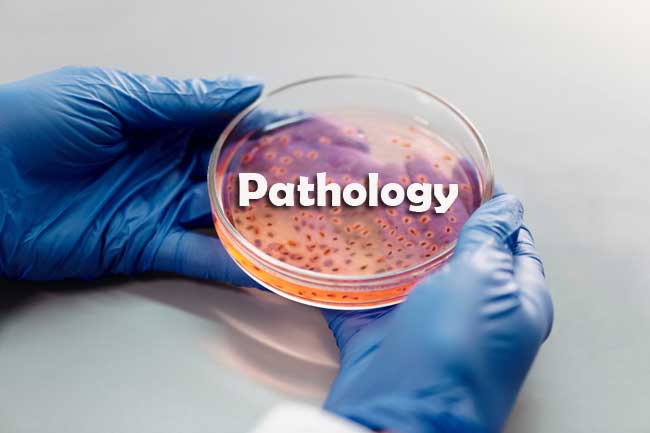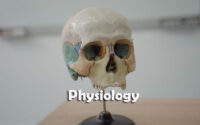Pathology MCQ
Download Pathology MCQ in this section. Hence, here are the direct download links for Pathology MCQs Papers. Share the details with your friends who are in search of Pathology MCQ Papers. Pathology MCQs papers are available here to download.

This is the good news for the candidates who are preparing for Pathology related jobs. Aspirants can download Pathology MCQ pdf through online mode. Applicants who are preparing for Pathology exam can download Pathology MCQ questions from our website for free.
Aspirants who are seeking for Pathology MCQ Question Papers, for those candidates our site is the useful platform to get Pathology Exam MCQs Test Papers.
MCQ on Pathology
1. Which is the most common cytogenatic abnormalities in adult myelodyplastic syndrome
1) Trisomy 8
2) 20 q-
3) 5 q-
4) Monosomy 7
2. What is the chromosomal translocation in AML M3:
1) t(18,21)
2) t(15;17)
3) t(8,21)
4) t(9,11)
3. Mantle cell lymphomas are positive for all of the following except:
1) CD 23
2) CD 20
3) CD 5
4) Cyclin D1
4. All are B cell lymphomas except :
1) Burkitt’s lymphoma
2) Mycosis fungoides
3) Mantle cell lymphoma
4) Follicular cell lymphoma
5. Proliferation and survival of myeloma cells are dependent on which of the following cytokines?
1) IL-1
2) IL-6
3) IL-2
4) IL-5
6. Platelet function defect is seen in all except:
1) Bernard Soulier syndrome
2) Wiskot Aldrich syndrome
3) von- Willebrand disease
4) Weber christian disease
7. The chromosomal translocation involving bcl-2 in B-cell lymphoma is:
1) t(8:14)
2) t(8:12)
3) t(14:18)
4) t(14:22)
8. Which of the following is the commonest histological finding I benign hypertension?
1) Proliferative end arteritis
2) Necrotizing arteriolitis
3) Hyaline arteriosclerosis
4) Cystic medial necrosis
9. Cystic medial necrosis is seen in
1) Marfan syndrome
2) Friedrichs ataxia
3) Down syndrome
4) Kawasaki disease
10. Which type of FSGS has the worst prgnosis?
1) Tip variant
2) Collapsing
3) NOS
4) Perihilar
11. Gluten sensitive enteropathy is most strongly associated with:
1) HLA-DQ2
2) HLA-DR4
3) HLA-DQ3
4) Blood group ‘B’
12. Rare histological variants of carcinoma breast with better prognosis include all except:
1) Colloid carcinoma
2) Medullary carcinoma
3) Inflammatory carcinoma
4) Tubular carcinoma
13. Programmed cell death is known as:
1) Cytolysis
2) Apoptosis
3) Necrosis
4) Proptosis
14. Liquefective necrosis is typically seen in :
1) Ischemic necrosis of heart
2) Ischemic necrosis of brain
3) Ischemic necrosis of intestine
4) Tuberculosis
15. Psammoma bodies are seen in all , except:
1) Follicular carcinoma of thyroid
2) Papillary carcinoma of thyroid
3) Serious systadenoma ovary
4) Meningioma
16. In acute inflammation of tissue, response consist of all except:
1) Vasodilation
2) Exudation
3) Neutrophillic response
4) Granuloma formation
17. Most important source of histamine
1) Mast cells
2) Neutrophil
3) Eosinophil
4) Macrophange
18. Cells most sensitive to hypoxia are :
1) Myocardial cells
2) Neurons
3) Hepatocytes
4) Renal tublar epithelial cells
19. Schiller-Duval bodies are seen in :
1) Teratoma
2) Seminoma
3) Yolk sac tumour
4) Chloriocarcinoma
20. Extrinsic pathway of clotting factor is measured by:
1) Prothrombin time
2) Activated partial Thromboplastin time
3) Bleeding time
4) Clotting time
| Mock Test | Practice Set |
| Important Questions | Quiz |
| Sample Papers | MCQ |
| Model Question | Questions and Answers |
21. Bleeding time is abnormal in :
1) Hemophilia
2) Christmas disease
3) von- Willebrand disease
4) Vitamin K deficiency
22. Most common site for Amoebiasis
1) Sigmoid colon
2) Transverse colon
3) Caecum & ascending colon
4) Liver
23. Reed Sternberg cells are seen in :
1) Hodgkins disease
2) Sickle cell anemia
3) Thalassemia
4) CML
24. Disseminated intravascular coagulation (DIC) is seen in
1) Acute Promyelocytic Leukemia
2) Acute Myelomonocytic Leukemia
3) Autoimmune hemolytic Anemia
4) CML
25. Wire loop lesions are seen in :
1) SLE
2) Diabetic nephropathy
3) Benign nephrosclerosis
4) Wegeners granulomatosis
26. Most common viral antigen used for diagnosis of HIV in blood before transfuion is :
1) P24
2) P17
3) P7
4) P14
27. Ringed Sideroblast are seen in:
1) Iron deficiency anemia
2) Myledysplastic syndrome
3) Thalassemia
4) Anemia of chronic disease
28. Autoimmune hemolytic anemia is seen in :
1) ALL
2) AML
3) CLL
4) CML
29. All are true about hashimoto’s thyroiditis except:
1) Follicular destruction
2) Lymphocytic infiltration
3) Oncocytic Metaplasia
4) Orphan annie Eye Nucleus
30. Calcitonin is a marker of thyroid
1) Papillary carcinoma
2) Medullary carcinoma
3) Anaplastic carcinoma
4) Adeno carcinoma
31. Which of the following stains is used to detect Lipid in frozen section biopsy in histopathology laboratory
1) PAS
2) NSE
3) Oil Red O
4) Silver Methanemine
32. Most common salivary gland tumour in adult is :
1) Mucoepidermoid Carcinoma
2) Lymphoma
3) Plemorphic adenoma
4) None
33. Commonest cause of cerebral infarction is :
1) Arterial thrombosis
2) Arteritis
3) Venous thrombosis
4) Embolism
34. Most common site of Berry’s Aneurysm is
1) Basilar artery
2) Anterior Communicating artery
3) Posterior Communicating artery
4) Posterior Cerebral artery
35. Most common CNS tumour is
1) Astrocytoma
2) Medulloblastoma
3) Meningioma
4) Oligodendroglioma
36. Aschoff’s nodule is seen in :
1) Subacute Bacterial Endocarditis
2) Libman Sacks Endocarditis
3) Rheumatic carditis
4) Non bacterial thrombotic Endocarditis
37. Troponin-T is a marker of :
1) Renal disease
2) Muscular dystrophy
3) Cirrhosis of liver
4) Myocardial infraction
38. Medial calcification is seen in :
1) Atherosclerosis
2) Arteriosclerosis
3) Monckenberg sclerosis
4) Dissecting Aneurysm
39. Lung cancer is most commonly associated with
1) Asbestosis
2) Silicosis
3) Berylliosis
4) Coal worker pneumoconiosis
40. In Philadelphia chromosome the defect is in
1) Short arm of chromosome 22
2) Long arm of chromosome 22
3) Short arm of chromosome 9
4) Chromosome 21
41. Bence Jones Protein are
1) Light chain
2) Heavy chain
3) Medium chain
4) All of these
42. Skip lesions are seen in:
1) Ulcerative Colitis
2) Carcinoid syndrome
3) Crohn’s disease
4) Whipple’s disease
43. Which of the following having 90% association with HLAB27
1) Ankylosing Spondylitis
2) Psoriasis
3) Rheumatic arthritis
4) Reiter syndrome
44. Nutmeg liver is seen in:
1) Right sided heart failure
2) Left sided heart failure
3) High pulmonary pressure
4) Low pulmonary pressure
45. Hepatitis E is transmitted by:
1) Blood
2) Faeco-oral
3) Venereal
4) All of these
46. Varocay bodies are seen in
1) Meningioma
2) Hemangioma
3) Glioma
4) Schwannoma
47. Gleason’s classification is used for
1) Carcinoma breast
2) Carcinoma prostate
3) Carcinoma pancreas
4) Carcinoma rectum
48. Fat embolism is commonly seen in :
1) Head injury
2) Long bone fracture
3) Drowning
4) Hanging
49. Lines of Zahn are found in:
1) Thrombus
2) Postmortem clot
3) Infarct tissue
4) All of these
50. Which of the following is an autosomal recessive condition
1) Ataxia Telangectasia
2) Neurofibromatosis
3) Peutz Jeghers syndrome
4) Tuberous sclerosis
51. The classic Karyotype of Klinefelter’s syndrome is:
1) 47XXY
2) 48XXXX
3) 45XO
4) 46XY/47XXY
52. BRCA1 gene is located on
1) Chromosome 13
2) Chromosome 11
3) Chromosome 17
4) Chromosome 22
53. Retinoblastoma is assciated with which of the following tumor
1) Osteoclastoma
2) Hepatocellular carcinoma
3) Squamus carcinoma
4) Osteosarcoma
54. Heart failure cells are seen in following organ
1) Kidney
2) Heart
3) Lungs
4) Brain
55. Alpha fetoprotein is a marker of
1) Heptablastoma
2) Renal cell carcinoma
3) Seminoma
4) Chorio carcinoma



